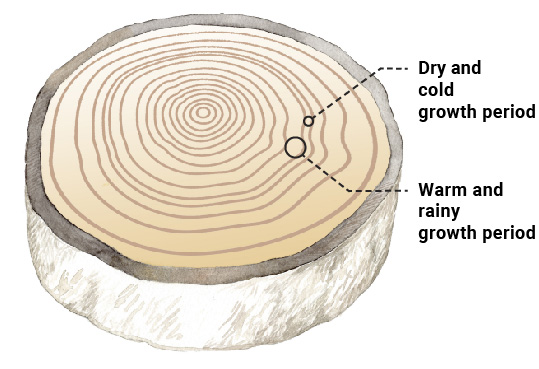Trees – The History Books of our Nature
Trees record the stories of the past in their growth rings. They are like a tree’s own diary, telling the story of its growth and history. The growth ring, or annual ring, consists of light and dark parts. In spring and summer during the period of rapid growth, the lighter part of the annual ring is produced. In autumn, when growth slows down and eventually stops in winter, a darker part emerges, separating the previous and the following year’s growth. A rainy summer forms thick rings, while drought causes them to narrow. The tree’s past is written in these rings as clearly as stories written in words.

The age of a conifer can be estimated from its layers or whorls of branches. The age of young pines and spruces can be estimated by counting the number of layers of branches. As the tree grows, the lowest layers of branches drop off so, as the age increases, an estimate of the number of layers of branches that have fallen off must be added.
Trees are the backbone of the forest and provide habitat and shelter for many species, including fungi, insects and birds. They also maintain soil structure and protect it from erosion, for example. As we walk along the forest trails and look at the trees of different ages, we can think of them as a history book of our forest, carrying with them the wisdom of the past.
Everyone’s rights
Everyone’s rights (previously everyman’s rights) allow the collection of cones, acorns, leaves, needles and bark that have fallen to the ground. You may not break off branches, tear off bark or collect cones, resin or sap from trees without the landowner’s permission. Cutting down or damaging live or dead trees is also prohibited. In addition, you always need the landowner’s permission to remove fallen timber.
Updated 7.2.2024